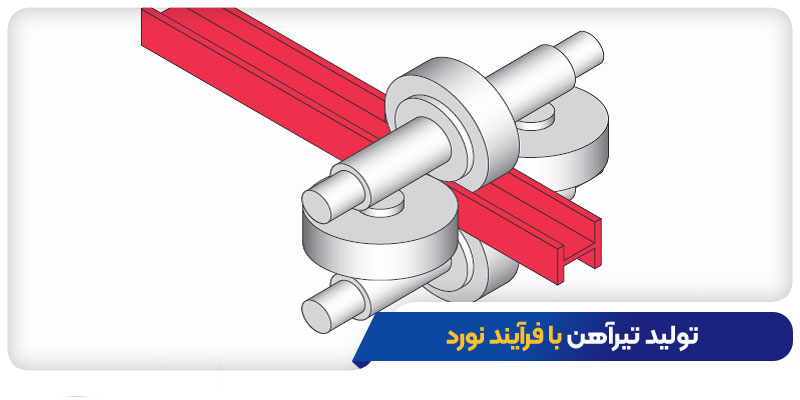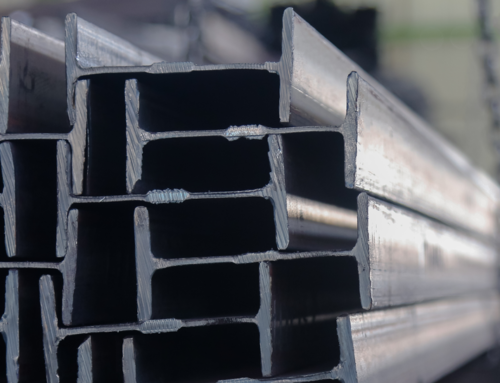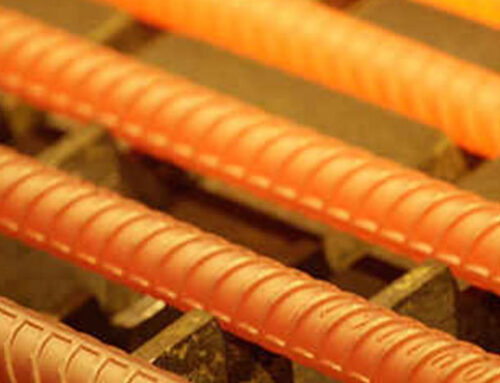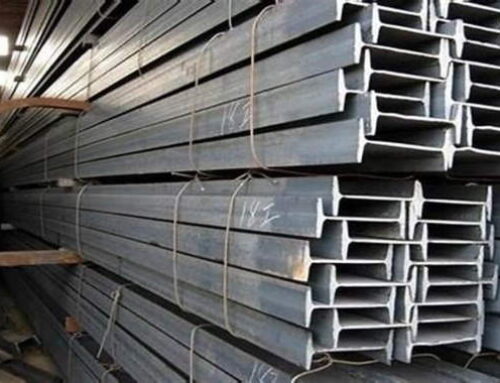In general, the parts that are subjected to lateral loads are called beams. All types of beams are usually placed horizontally, but there are also exceptional cases. A beam is a beam made of steel. A beam is one of the most important steel sections in construction. Its cross-section is in the shape of the letter I or H and its function is to resist shear forces and bending moments. The cross-section of the beams also consists of two wings perpendicular to the web.
Types of beams
Beams are produced in various types and are very different in terms of appearance, mechanical properties and type of application. The most important categories of beams are introduced below:
IPE beam, which is the most widely used beam in construction, is very similar to the English letter I. The production of this type of beam is based on European standards and its wings have a constant thickness.
INP beam is designed based on American standards and is produced in China and Russia. The difference between INP beams and IPE beams is in the thickness of their flanges; so that the thickness of the flanges of IPE beams is constant, but the flanges of INP beams are inclined and for this reason, the thickness is not the same throughout the entire length of the flange.
IPB beams or its beams are also another type of beam widely used in construction. In this type of beam, which has a cross-sectional area similar to the letter H, the web and flange lengths are equal.
Beams can also be divided into three types of main beams, secondary beams, and coil beams in terms of their method and location of use:
Main beam: The main beam is connected horizontally to the columns. Its function is to transfer the lateral load from the secondary beams to the columns.
Secondary beam: The secondary beam is connected horizontally to the main beams to transfer the load to the main beam.
Coil beam: The coil beam is also installed horizontally and is responsible for transferring the force from the transverse beam to the column. The coil beam is connected to two transverse beams that are located in the roof and the truss of the columns.
Now that we have become familiar with the types of beams in general, it is necessary to also understand the term joist. Although beams and joists seem to be derivatives of each other from the perspective of naming, they are very different from each other. In the following, we will explain the difference between beams and joists so that you do not confuse these two members with each other.
What is the difference between a beam and a joist?
The main difference between a beam and a joist is in the type of connection and its application. The function of a beam is to transfer the load to the column, but with the use of a joist, the loads are transferred to the main beams and are not directly connected to the columns. In this way, it can be said that a beam is the most important load-bearing member of a roof and the main horizontal support of the structure that bears the weight of the beams and other elements of the building. But a joist is a prefabricated member (consisting of concrete and steel reinforcement) that is placed horizontally between the columns of the building, walls or beams of the building and, in combination with other joists, supports the roof or floor against live and dead forces. In fact, a joist is a form of beam that usually covers relatively short distances.
Beams and joists also differ from each other in terms of size. In general, it can be said that beams are larger in size than beams; But the size parameter alone is not decisive, but in most cases the way the beams are used determines the difference between these two members. In this way, if a beam is used as the main support in a horizontal position, it is called a main beam, and if it is used as a small support in a structure, it is called a joist.
Beam Production Standards
There are various international standards for the production of various types of beams that manufacturers are required to implement. The Iranian National Standard has also developed its own standard for each type of beam, which is as follows:
Iranian National Standard for the Production of IPE Beams: Standard No. 1791 and 16348
Iranian National Standard for the Production of INP Beams: Standard No. 3277
Iranian National Standard for the Production of IPB Beams (Hash Beams): Standard No. 13781 – 13779 – 14484
How to Make a Beam
The production of a beam may seem like a relatively simple process, but a lot of research, experience, and effort goes into each and every beam. There is a fine line between poor quality steel beams and cost-effective, principled steel beams, and ensuring the quality of the beams is a very difficult task.
If you are familiar with the steel industry, you probably know that hot rolling is one of the methods of making beams. Beams such as IPE beams, Hash beams, and INP beams produced in reputable factories are made using the rolling process. But there are other ways to produce beams. In general, we can say that steel beams are produced by rolling, extrusion, welding, or riveting, each of which we will explain below.
Production of beams by rolling process: Beams can be produced by hot or cold rolling. In the manufacture of hot-rolled beams, the iron ingot is melted at a temperature above 1000 degrees Celsius and then rolling and finishing operations are performed on it. The difference in the cold rolling method is also related to the finishing process, which is longer than hot rolling. In cold rolling, the cooled steel output from the hot rolling is rolled in a process at ambient temperature.

Production of beams by welding and riveting: Beams can also be made by welding. In this process, metal sheets are cut to the desired dimensions and welded together using industrial welding tools.
In the method of making beams using riveting, metal sheets are also cut, holes are made in the metal pieces and they are held together by rivets.
Production of extruded beams: Beams can also be made by the extrusion process. In this process, the cross-sectional area of the billet (which can be cold or hot) is reduced by passing through a specially shaped die. Then, a separator is placed between the metal and the piston and the metal is compressed into the die by the piston. Finally, the extruded beam is pulled from the other side to be flattened.
Production of honeycomb beams is different from other beams. Because these beams are not produced directly in the factory. In fact, honeycomb beams are made using IPE beams.
For this purpose, IPE beams of 12 to 30 cm in size are used. The working method is as follows: first, the beam is transferred to the honeycomb beam manufacturing workshop. Then, the beam web is cut into a curve. This is done using a template and using two methods, Panier or Litska. This divides the beam into two halves. After cutting the beam, by moving the two cut parts lengthwise and welding them together, a honeycomb beam is created with holes along the web.
These holes are usually circular or hexagonal. The way the beam is welded is also done in two ways: one-sided welding or full welding.
One thing to note in the production of honeycomb beams is the increase in the length and web of the honeycomb beam during the manufacturing process. In such a way that the size of this beam increases by 7 to 9 cm after manufacturing, and its length also increases by about 15 to 20 cm.
What materials are beams made of?
The most commonly used materials for beams are ordinary steel or carbon steel. As the name carbon steel beam indicates, the dominant element in this type of beam is carbon, which makes the manufactured beam very hard and durable.
Final words
The performance of main beams and joists is different from each other. Also, the beam head is larger and heavier than the joists. The most important method of producing beams is using hot rolling. The rolled beam is cut to the desired size using two methods, Kopal or Bernol. There are large factories in the country that produce high-quality beams. Among the largest and most important of them is the Isfahan Iron and Steel Factory, which subsequently has a higher price than beams produced by other factories. The price of steel beams, in addition to the manufacturing plant, depends on other factors such as currency and dollar fluctuations, global iron prices, etc. In general, fluctuations in steel beam prices have a great impact on the cost of construction projects.





Leave A Comment